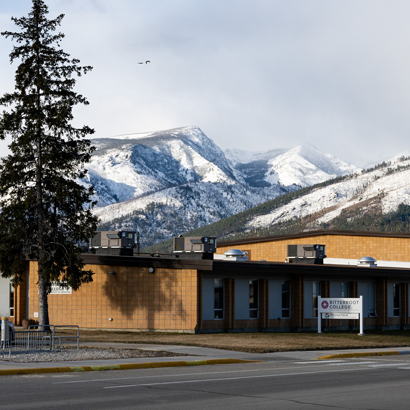Veterinary Assistant
Online Non-credit Training
Program Overview:
Veterinary assistants take charge of making sure office visits and procedures go smoothly for animals under veterinary care. Our 100% online course will train you to become a veterinary assistant, so you can turn your love of animals into a rewarding career.
Program Fee
$2,145
Cost includes online instruction and textbook. *Recommended to have a high school diploma or equivalent.
Installment payment options as low as $104 per month.
Program Format
225 hours of online instruction
6 months of access, self-paced
Externship Starter Kit
To qualify for the externship applications process, students must successfully complete the online course content. Going through the externship application process does not guarantee an externship. Students can begin researching the steps of the application process 2 weeks prior to completing courses.
According to the Bureau of Labor Statistics, the average salary of a veterinary assistant is currently just about $30,000 per year.
Jobs are expected to increase by 19% through 2031, which is considered significantly faster than average positions. There should be plenty of job opportunities for veterinary assistants regardless of location.
UM Bitterroot is exploring partnerships for a career ladder option to Veterinarian Technician for Fall of 2025.
*Bureau of Labor Statistics, U.S. Department of Labor, Occupational Outlook Handbook, Veterinary Assistants and Laboratory Animal Caretakers (visited July 03, 2023).WHAT DOES A VETERINARY ASSISTANT DO?
The number one job of a veterinary assistant is to support the veterinarian as well as veterinarian technicians with basic tasks. Veterinary assistants typically feed, weigh, bathe and take the temperature of animals. They may also help give medication, clean cages and help restrain animals during treatment or other medical procedures as needed. This program will also set you up nicely to work as a laboratory animal caretaker and a research laboratory like Rocky Mountain Labs.
DO VETERINARY ASSISTANTS HANDLE ADMINISTRATIVE DUTIES?
Some veterinary assistants perform clerical work such as scheduling appointments and speaking with customers. As a vet assistant, you may handle many of the logistical and operating duties, such as check-in, billing and after visit care. Duties will vary depending on the office you work in, but every task is to ensure the health and well-being of animals inside the veterinary practice.
WHAT’S THE DIFFERENCE BETWEEN A VETERINARY ASSISTANT AND VETERINARY TECHNICIAN?
Veterinary assistants are typically trained through a certificate program to help with basic duties. Veterinary technicians, on the other hand, have a formal education and work as the nurse of a veterinarian. Veterinary technicians need two-year associate degrees accredited by the American Veterinary Medical Association (AVMA).
CAN I GO FROM A VETERINARY ASSISTANT TO A VETERINARY TECHNICIAN?
Yes. If you pursue additional education and licensing, you could become a veterinary technician. Working as a vet assistant is a great first step to understanding the industry, different specialties and advanced duties required to work as a vet technician.
ARE THERE ANY PREREQUISITES TO TAKE THIS COURSE?
There are no prerequisites to take this course. A high school diploma or equivalent is recommended but not essential.
WHAT KIND OF SUPPORT WILL I RECEIVE?
The course instructor will be available by email to answer any questions and provide feedback on your performance. Occasionally, your course may be supported by a team of industry experts. You will also receive support from the student advising team.
WHAT IF I DON'T HAVE ENOUGH TIME TO COMPLETE THE COURSE WITHIN THE TIME FRAME PROVIDED?
If you are unable to complete the course, contact your Student Advisor to help you work out a suitable completion date. Please note that an extension fee will be charged. If you are funded through a third-party organization, approval may also be required.
Anatomy and physiology of the major organ systems
Handling medical records and communicate with clients and coworkers
Restraining animals for procedures, take vital signs, and bathe them
Nutrition, vaccinations and administering medication
Preparing prescriptions, taking blood samples and radiographs
Getting Started
Welcome To The Veterinary Hospital
Getting Ready For Your First Visit
Physiology And Anatomy 1
Directional Signs And The Skeletal System
Physiology And Anatomy 2
The Nervous System, Endocrine System, And Muscles And Joints
Physiology And Anatomy 3
The Circulatory And Respiratory Systems
Physiology And Anatomy 4
The Digestive System, Urogenital System, Liver, And Spleen
Front Office Duties
Records, Confidentiality, And Client Relations
More Front Office Tips, And Determining Age And Gender Of Kittens And Puppies
Canine Restraint
Feline And Exotic Restraint
The Physical Examination
Procedures, Restraint, And Vital Signs
Everyday Procedures For The Veterinary Assistant
Workplace Hazards And Infection Control
The Reproductive Cycle And Sterilization Procedures
Vaccinology
Nutrition Basics And Prescription Foods
Prescriptions
Preparing And Calculating Doses
Types Of Medications And What They Do
Giving Medications
The Euthanasia Process
Sampling
Taking Blood Samples
Interpreting Blood Tests And Handling Blood
Urine Collection, Handling, And Interpretation
Tests: Serology, Scrapings, Smears, Flotations, And Necropsies
Radiology
Radiographs And Personal Safety
Radiographic Positioning
Pain Recognition And Emergency Care
Dentistry
Charting, Tooth Disease, And Dental Care
External Parasites
Fleas, Ticks, Mites, And More
Parasites Of The Gastrointestinal Tract And Heart
Poisonings In Pets
Surgery 1
Preparing The Patient
Surgery 2
Your Role During And After
Understanding Animal Behavior
The Job Search And Future Opportunities
Jeff Grognet
Jeff Grognet has been a companion animal veterinarian for 25 years. He was a pioneer in the field of veterinary assistant teaching, developing his first course more than 18 years ago. Due to the success of his veterinary receptionist/assistant courses, he expanded his teaching into other high-demand areas including pet first aid and alternative medical therapies for companion animals. He practices at a veterinary hospital and contributes regularly to several magazines.
